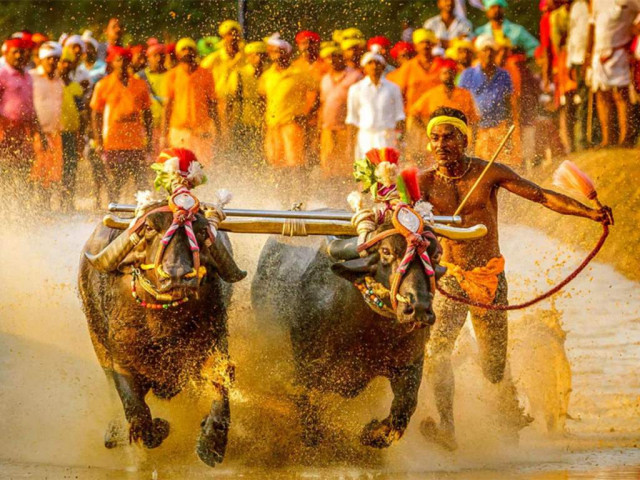India's 'Usain Bolt': Buffalo runner turns down sprint trial
Gowda says he wants to achieve more in traditional footrace Kambala

PHOTO: FILE
Srinivas Gowda and his buffaloes ran 142.5 metres in 13.62 seconds, setting a record in the annual race known as Kambala in the southern state of Karnataka.
Meet India's latest Sports Sensation ! ! !
— BJP Karnataka (@BJP4Karnataka) February 15, 2020
Srinivasa Gowda from Moodabidri, Mangaluru ran a distance of 142.5 metres in 13.62 seconds in a slushy paddy field at the Kambala race.
He would be the fastest Athlete in the World if He repeats His amazing feat on the track. pic.twitter.com/ZylEPdD22r
With a time that equates to running 100m in 9.55 seconds, compared to the retired Bolt's world record of 9.58sec, social media buzz erupted over the chiselled construction worker.
But with the Tokyo Olympics looming in July, Gowda politely declined an invitation from India's sports minister to try out at the Sports Authority of India in Bangalore.
"I will not be attending trials at Sports Authority of India. I want to achieve more in Kambala," Gowda, 28, told Indian media. "Kambala and track events are different and those who have done well in one cannot replicate in the other. Many who have achieved in track events have tried Kambala and have not been successful. In Kambala we run on heels whereas in track it is on toes."
Kambala is an annual race where racers splash 142m through paddy fields holding a rope attached to two buffaloes, who run ahead of them.
Many users have noted that the runners are pulled along by the buffaloes, who are lashed together.
"Never in my dream did I think that I would be so famous. The credit should go to my buffaloes," said Gowda. "I could achieve this only because they cooperated with me."



















COMMENTS
Comments are moderated and generally will be posted if they are on-topic and not abusive.
For more information, please see our Comments FAQ